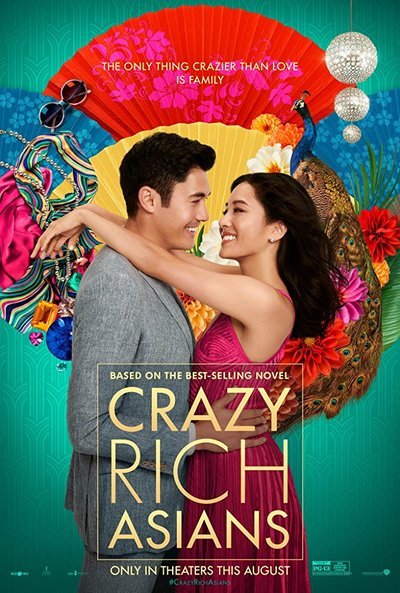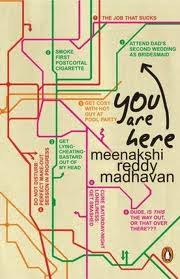
Of course I had to watch this movie. I loved the books. Sure they’re not high literature, but what Kevin Kwan has done is offer an extremely readable ethnographic portrait of a sliver of Singapore society – the very very rich old moneyed clans with their ties across Asia.
Having read and enjoyed all three books (Book 1, Book 3 and Book 2 in order of preference if you must know), I would have been jumping up and down for the film, without all the hype, which I’ll admit was cray cray – though the justification for the hype was that it is the first big budget Hollywood production to feature an all-Asian cast since The Joy Luck Club, which I can get on board with.
With the hype has come criticism – that the film fails in its representation of Singaporean society, effacing its multiracial character in favour of a sweeping Chineseness, with the only Indians being featured being basically servants (and no Malays at all). The defence has been that the novel and the film focus on an extremely restricted strata of society – and this is exactly it’s point, that it is clannish and exclusive.
Having read the novels, however, I can say that the novel is much more racially diverse even within the rarified world of the elite. I distinctly remember a hyper-wealthy Indian family being mentioned multiple times as part of the same social world as the formidable grandmother Shang Su Yi. The novel actually details the connections across the super wealthy and former royalty in Asia – from Thais to Indians and Chinese. I’m pretty sure that Indians were also mentioned as part of the social set of the younger generation (Rachel and Nick honeymooned in India) and generally part of Singaoire society. I cannot be 100% sure of Malays but that’s because the representation of Indians specifically caught my attention in the novel.
In the film, Indians appear in the background as servants and in one particularly unnecessary scene provoke fear as security guards when Rachel and her friend believe themselves to be lost in the jungle. The turbaned security guards brandishing guns are perceived as ‘scary tribals’, which is quite silly as Peik Lin, Rachel’s friend, is from Singapore and surely would be familiar with turbaned people. I blame this on Hollywood’s cluelessness and insatiable desire for a cheap laugh.
Even more galling is that the Singapore Tourism Board associated itself with the film – which makes its narrative (with its offensive Chinese-washing of Singaporean society) somewhat official. I can understand why the tourism board jumped on this – the film and the novel are love letters to Singpaore, and while the focus is on high society and fabulous displays of wealth, the best characters are notable for their down-to-earthness so that no visit to Singapore is complete without a visit to a hawker centre for example.
So yes, on representation, the film is a #fail, ironic because the hype promotes it as a #win for representation of Asian faces in Hollywood. But as we know, there are exclusions within exclusions and Crazy Rich Asians is a textbook case of this.
The other unnecessary Hollywoodish change in the film was the proposal scene on the plane at the end. It was straight out of some chick flick so generic that I cannot recall which one it was. It felt wrong, because for all it’s flaws – OTTness being the principle one – I don’t recall that this was the book’s ending (it was not). The book offers a much more ambiguous happy ending.
On the other hand, the film had some good additions, particularly in the form of Awkwafina as Peik Lin and Ken Jeong as her father, both of whom kept the husband entertained when he was threatening to descend into “how much longer”. There is also the much vaunted mah jong scene, though this lent itself to the Hollywood ending so I’m not sure I’m fully on board with it. Apparently, the Hollwyoodish ending – with mummy-in-law lending her ring to the festivities – was due to Michelle Yeoh, who plays Eleanor Young, Nick’s mother, refused to play the stereotypical evil mother-in-law, which is a pity, because Eleanor was both a cliche and not, a very Singaporean mother. Honestly, Michelle Yeoh plays a different Eleanor to the one I imagined when I read the book, but that’s not necessarily a bad thing.
In terms of casting, the film got it right, half-Brit Henry Golding notwithstanding (my Singaporean colleague tsked tsked that he is not goodlooking at all, but I don’t know). I loved Constance Wu as Rachel.
The person I had the most problem with was Gemma Chan as Astrid, the novel’s quintessential It girl. In the film, Astrid is stiff and appears to be in mourning most of the time, even before her issues with her husband are revealed, except in the scene with Rachel at the engagement party. In the novels, Astrid and her storyline are second only to Nick’s and frankly, her love story in Book 2 was super romantic, but apparently all this was squished in the movie into an exchange of looks during the credits which I missed – and am likely going to watch the whole movie again for – because the husband jumped up and made a beeline for the exit as he always does.
Apparently, a sequel film is already on the cards, and for that I’m glad. Hopefully, the makers will take on board the critique of the representation of minorities and do better next time around.
At heart, Crazy Rich Asians is in the lines of the 19th century courtship novel such as Pride and Prejudice, in which a young woman of respectable but not outstanding lineage finds herself in an aristocratic milieu. In it’s minute detailing of the life of this class, it also harks back to The Age of Innocence. This is a classic romance plot line that has been successfully handed down to chick lit via the Harlequin romance.
It is also relatable in another sense. Many young women on the cusp of their weddings (myself included) can recall the sense of uncharted waters when faced with the minefield of their husband’s family – formidable mother-in-law, catty cousins, judgemental aunties, ex-girlfriends and traditions in which one never seems to put one’s foot right. The point in the film when Rachel is humiliated and flees had a number of us, tearing up. The Chinese aunty next to me was basically bawling during the mah jong scene.
So while this is a tale of the ultra-rich, in some ways, it is one that speaks to the concerns of young and not-so-young women.









